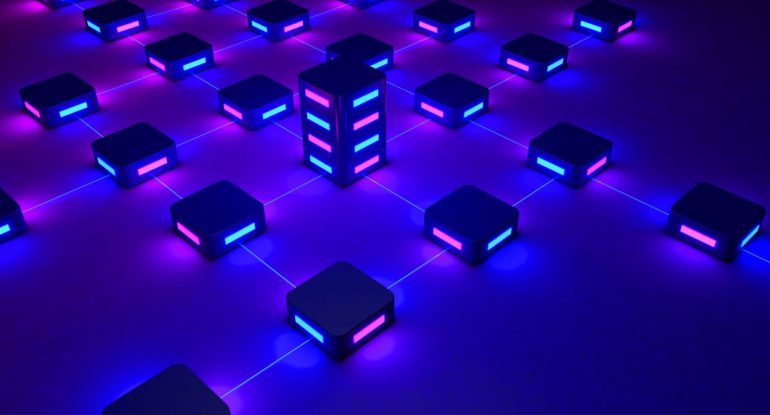Top 10 Different Types of Blockchain Nodes You Need to Know

Blockchain technology is becoming more and more popular very quickly. This industry is changing quickly and becoming more important to our lives. Every decentralised ledger is made up of nodes, which are the basic building blocks. Because of this, you need to understand blockchain nodes if you want to do business on a blockchain or work with a company that uses this technology.
What are Blockchain nodes?
The exact definition of a blockchain node depends on the type of network and what it is used for. In general, a node is an electronic device with an IP address that is connected to the blockchain network. Nodes are communication hubs allowing users to interact with the network and each other. But not every electronic device is a “blockchain node.”
Contrary to what most people think, not all nodes do the same thing. Some nodes, for instance, are only used to store records about transactions, while others can’t store any records at all. Some of the different kinds of blockchain nodes are listed below.
Different kinds of blockchain nodes
Nodes in a blockchain are put into groups based on what they do.
- Pruned Full Nodes
Pruned full nodes store data or blocks on the hard disc. They do this by getting rid of the older blocks. They have been given a place to store things.
These nodes must first download the whole blockchain to their hard drive and then delete older data starting from the first block. They keep getting rid of older blocks until only the most recent transaction records are left in the storage, which is the limit.
- Full Node
Most of the time, when people say “blockchain node,” they mean “full node.” Full nodes keep track of all the transactions on the blockchain. Because of this, they are also called “blockchain servers.” Many consensus models, like Proof of Work and Proof of Stake, need all nodes to be full in order to reach a decision. Before an upgrade or improvement is implemented, the network ensures that all full nodes are ready for it. A blockchain is run with the help of these nodes.
For example, if a pruned full node only has 200 MB of storage space, it will only keep the most recent 200 MB of data from transactions. It will be synced with the network so that it can keep getting new records and get rid of old ones.
- Archival Full Node
Unlike pruned full nodes, archival full nodes keep and store the whole blockchain database. They are the most common kind of blockchain node, and there is no limit to how much data they can store. There are different kinds of archival full nodes, such as authority nodes, miner nodes, staking nodes, and master nodes.
- Miner Nodes
Miner nodes are important parts of blockchains like Bitcoin that use a Proof of Work consensus model. For these nodes to approve transactions on the blockchain, they have to solve hard math problems.
To solve these problems, you need very complicated computers and a lot of electricity. As an incentive, once a miner node has solved the problem and added the block of transaction records to the blockchain, it gets some new tokens.
- Places of Power
A person who downloads and syncs blockchain data with the rest of the network is a node in a public blockchain.
But only a few authority nodes can do this on private blockchains and some partially centralised blockchains. These nodes can control what the other nodes can do and how much they can do.
- Staking Nodes
Staking nodes use the Proof of Stake consensus method to ensure that blockchains’ transactions are correct.
To set up a staking node, users must lock a certain number of native tokens from that ecosystem on the blockchain. A random staking node is then used to process transactions and record them on the ledger.
Rules have already been set up for how to choose. Some blockchains look at the number of locked funds, while others look at how long the funds have been on the blockchain. To stake nodes, verify transactions, and use a lot less electricity than miner nodes.
- Point of Light
The second most common type of blockchain node is the light node. These nodes aim to make transactions, and daily tasks go faster. Because of this, they are also called Simplified Payment Verification (SPV) nodes.
They are made to only store the information they need, which are the block headers, instead of downloading and storing the whole blockchain. Because of this, they save their users a lot of time and space.
- Masternodes
Masternodes are nodes that have everything they need and can’t add more blocks to the chain. These nodes do nothing but check transactions and record them. They can also take on any other tasks or responsibilities that are given to them. In 2014, Dash was the first blockchain to build its network around master nodes.
- Lightning Nodes
When a blockchain network is too busy, transactions may take longer than usual. Lightning nodes are used to make sure that transaction wait times are as short as possible. These nodes let users outside of the blockchain connect to the network and do transactions. They make the network less busy, so transactions happen quickly and don’t cost much.
- Super Nodes
Supernodes are a type of blockchain node you don’t see often. They are designed to do certain things. For example, a blockchain can use super nodes to keep the network rules in place or implement an upgrade.
Also, read – Your Ultimate Guide To Ethereum RPC Nodes
Conclusion
Nodes in a blockchain do the same thing that servers do on the internet. Whether you are a developer or a user, you must know much about blockchain nodes.




























































